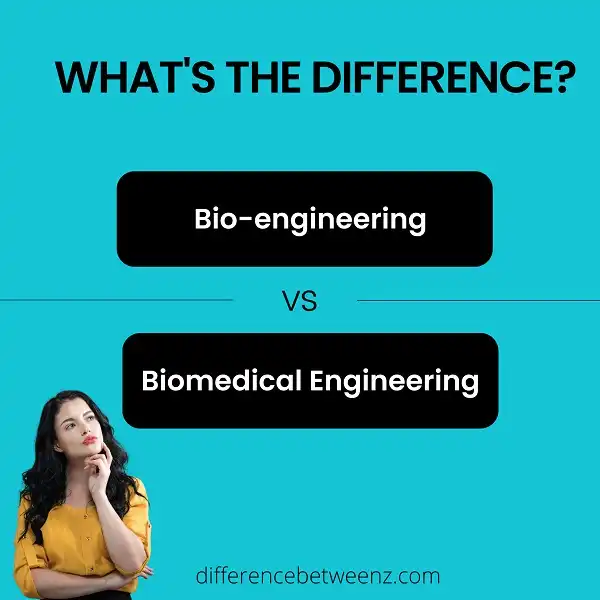In the ever-evolving landscape of science and engineering, the disciplines of bioengineering and biomedical engineering often provoke curiosity among students and professionals alike. With the rapid advancement of technology and its integration with biological systems, understanding the subtle yet significant distinctions between these two fields becomes paramount. While both domains inherently focus on applying engineering principles to biological contexts, the nuances in their objectives, methodologies, and applications can greatly influence one’s academic and career trajectory.
Defining Bioengineering
Bioengineering, as a comprehensive field, encompasses a broad array of topics that bridge biology with engineering disciplines. This domain integrates the principles of mechanical, electrical, and chemical engineering into biological systems to innovate solutions that enhance human life and improve environmental health. Bioengineering projects may range from developing biofuels to creating synthetic tissues. This field is intrinsically interdisciplinary, marrying engineering rigor with biological insights, and often lends itself to a variety of industries including agriculture, pharmaceuticals, and environmental science.
Evolution of Biomedical Engineering
Conversely, biomedical engineering is more distinctly centered on improving healthcare and therapeutic outcomes. By specifically focusing on medical devices, imaging systems, and advanced diagnostic technologies, biomedical engineers directly contribute to advancements in patient care. This specialization often involves rigorous training in physiology, materials science, and regulatory procedures, allowing for the development of innovative health solutions such as prosthetic limbs, artificial organs, and diagnostic equipment. The emphasis lies heavily on collaborative work with medical professionals to ensure that engineering solutions are immensely beneficial in clinical settings.
Key Differences in Focus
The principal distinction between bioengineering and biomedical engineering can be summarized by their respective focal points. Bioengineering is characterized by a more general application of engineering practices to biological problems across various sectors. In contrast, biomedical engineering hones in specifically on medical technologies and devices aimed at clinical application.
While bioengineering may include projects such as the development of biomaterials for food production or bioenergy, this extends beyond the confines of health care and delves into environmental and agricultural advancements. Conversely, biomedical engineering is almost exclusively rooted in the pursuit of enhancing human health outcomes through immediate applications that support and improve patient care.
Curtailing Career Paths
Choosing between bioengineering and biomedical engineering often dictates the trajectory of a career. Bioengineers frequently find themselves in a kaleidoscope of industries, adapting their versatile skills to roles in renewable energy, biotechnology, and environmental protection. This breadth provides a diverse array of opportunities, from product development to environmental consulting, making it an appealing choice for those with a multifaceted interest in technology and environmental challenges.
On the other hand, biomedical engineers typically journey towards careers strictly aligned with healthcare. They may work on the cutting edge of medical device innovation, engage in clinical research, or focus on the regulatory aspects of health care technologies. Career prospects include roles as clinical engineers, research scientists, or regulatory affairs specialists, emphasizing a commitment to improving health outcomes through technology.
Educational Considerations
Research and Development
In terms of research, bioengineering projects often emphasize sustainability and innovation, tackling diverse global challenges. Researchers may explore genetic modifications for crops or the creation of novel biodegradable materials, underscoring a commitment to addressing environmental issues.
In stark contrast, biomedical engineering research is primarily concentrated on enhancing human health through technological innovation. Investigative efforts may revolve around developing new imaging techniques or refining surgical devices, demonstrating a commitment to improving patient care and treatment methodologies.
Long-Term Implications on Society
Both bioengineering and biomedical engineering wield profound implications for society. Bioengineering research can lead to sustainable solutions to food and environmental crises, ensuring we develop technologies that are in harmony with ecological principles. Conversely, biomedical engineering directly impacts public health through the creation of technologies that save lives and enhance the quality of life for countless individuals.
Conclusion: Making an Informed Decision
Deciding between bioengineering and biomedical engineering should hinge on one’s interests and long-term career aspirations. Individuals who relish a diverse array of applications and wish to tackle global challenges may find bioengineering to be fulfilling. Conversely, those with a profound passion for medicine and healthcare technologies might gravitate towards biomedical engineering, where they can directly influence patient outcomes and healthcare efficacy.
Ultimately, the decision should be informed by personal interest, desired impact on society, and readiness to engage with either broad or specialized challenges within the realms of these captivating fields. Both pathways offer the ability to contribute significantly to technological innovations, cementing their profound importance in our modern world.










